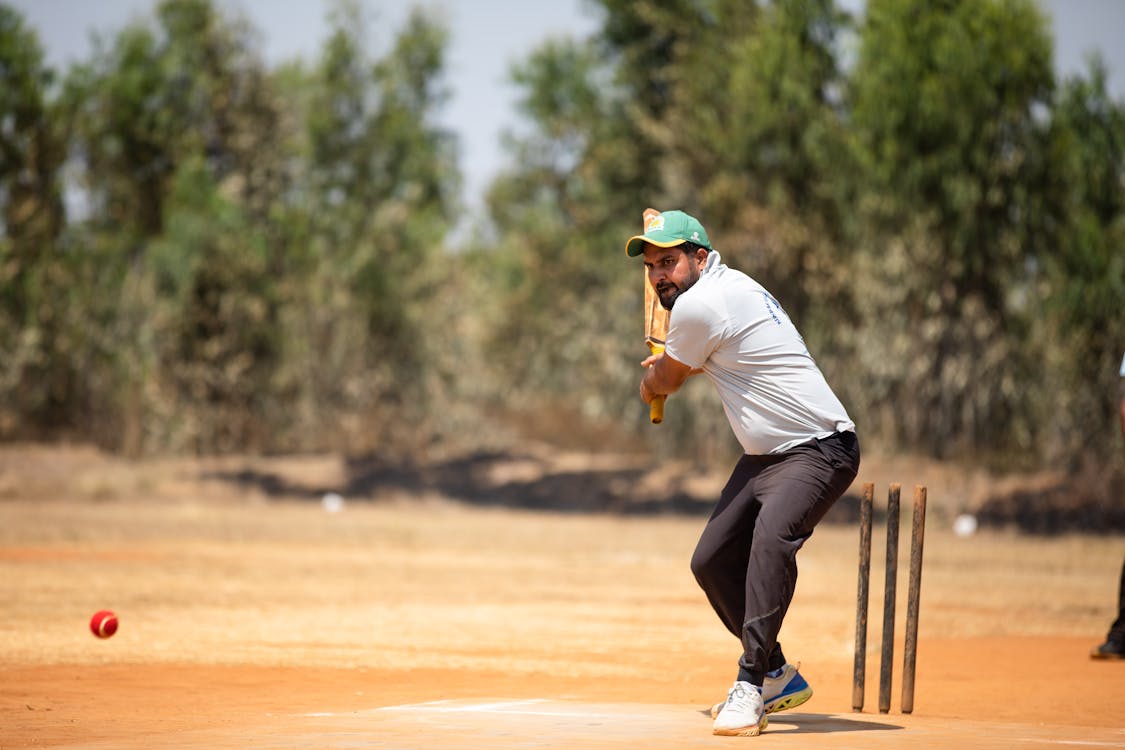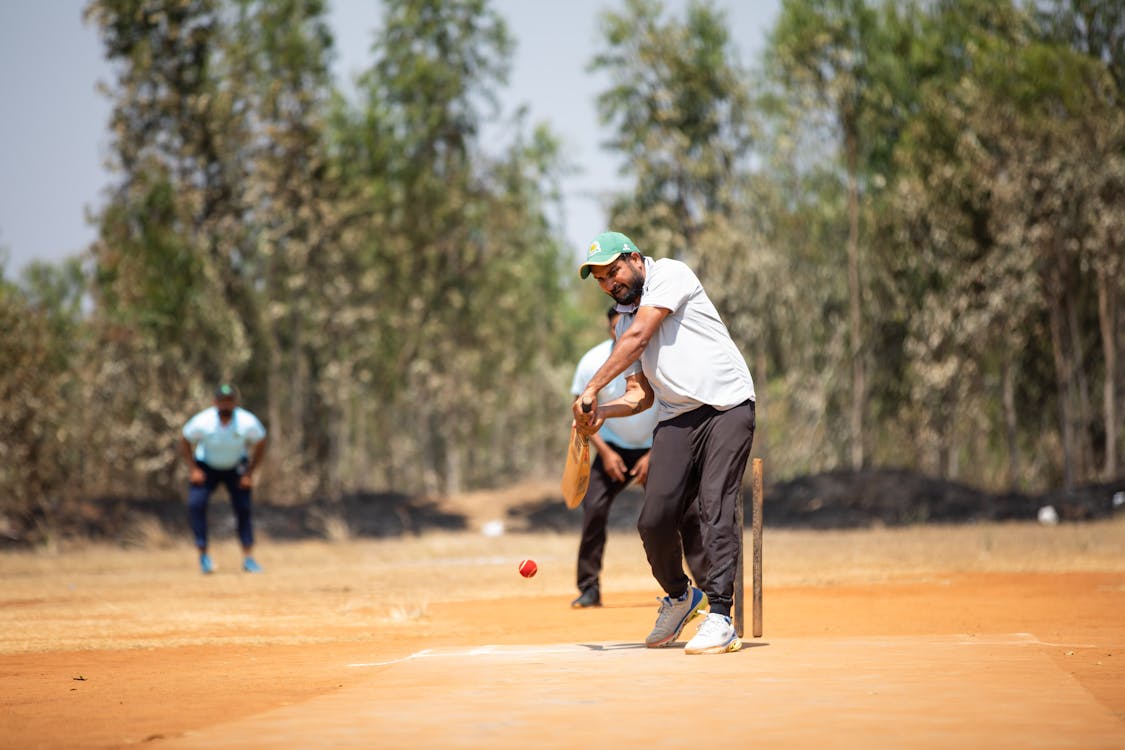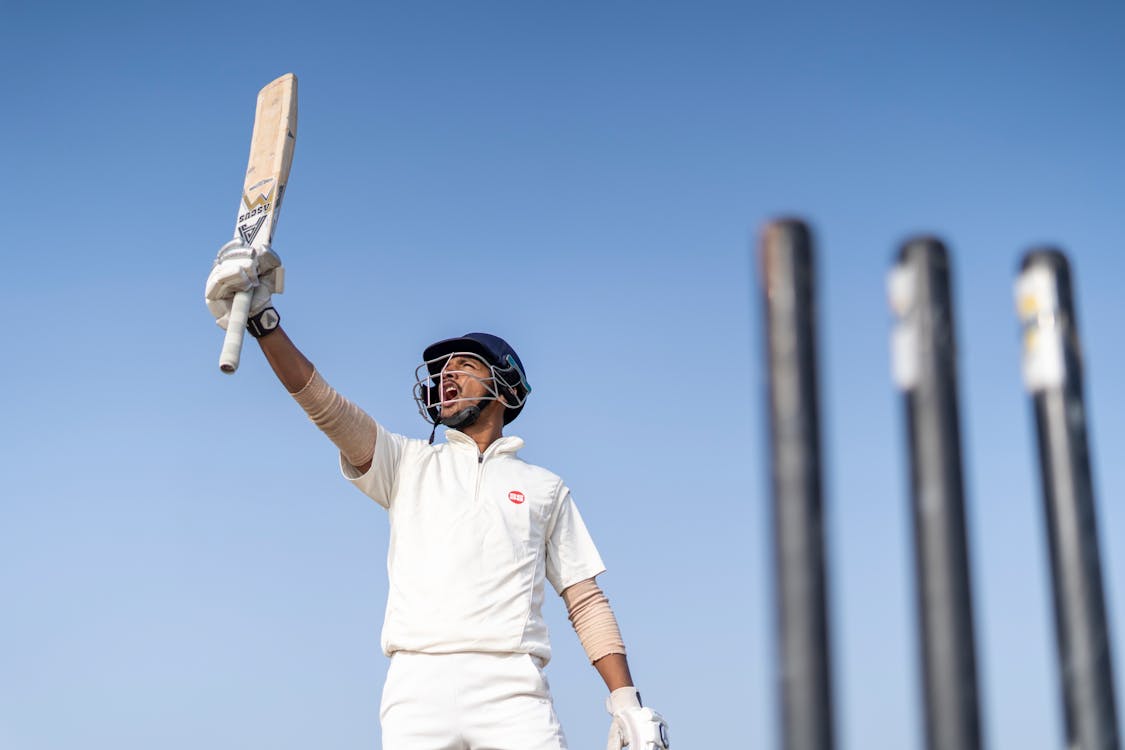In this guide, we review the basic rules of cricket. The 2023 Cricket World Cup started on the 5th of October but for those of you that are unfamiliar with the rules, let us fill you in. Cricket is one of the most popular sports in the world. It is especially popular in the United Kingdom and the former Commonwealth countries. Continue reading to learn all you need to know about the sport in our illustrious cricket guide.
[crick_banner_7361]
The Basic Rules of Cricket: An Introduction
To understand the basic rules of cricket, it is important to first begin with the absolute basics. Keep in mind, these rules are utterly simple, as such, we start off from understanding that there are two teams with the objective of outscoring each other. The teams typically consist of eleven players who score runs (points) in hopes of having more than the other team.
When the two teams play, a coin toss between the two captains of the respective teams will determine the outcome of which team chooses to bat or bowl first. The team that chooses to bat will start off with two players on the pitch, batting their way through the game. Should one of the batters be dismissed, the next batter for the team will make his way to the pitch. That is to say, there must always be two batters on the pitch.
When one of the teams is bowling, they will always have a bowler, a wicketkeeper and the rest of the team will act as fielders. The bowler will bowl for an over, before the next bowler takes up the position. That means that there must always be at least two bowlers in the team, so that they can rotate between overs. However, teams tend to have far more bowlers than just two.
The wicketkeeper stands behind the batsman to which the bowler is serving to. His game is to catch any slip shots from one of the two batsmen. They also tend to be the closest fielder to the wickets and wear special gloves and a protective helmet.

Cricket’s Aim of the Game
Before introducing any bats or balls onto the pitch, the two captains pick between heads or tails for the all-important coin toss. The winning captain can choose his team to either bat or bowl first.
The batting team should try to score the greatest number of runs in the allotted time. An alternative is to score as many runs as they can before all but one of the batting players on the team are eliminated.
The bowling team should try to prevent them from scoring through various means. This means bowling dot balls (balls with no runs), bowling them out (removing the batter from the pitch) or other means of winning.
Once the two teams have completed the innings, the teams swap places. That means the batting team will become the bowlers and the bowling team will have to bat. This will become the second innings, where the bowling team has to try and outscore their opponents.
The team with the highest number of runs at the end of the day wins the game.
Batting Team
In the batting team, the top order is the best three to four batters on the team. These players include the two opening batsman and the third or possibly fourth to show. The middle order is the middle section of the team, the batters that can help build upon the score from the opening three batters. The tail-enders are typically the bowlers of the team, the remaining three or four players that are not known for their batting skills.
Bowling Team
The bowling team tends to have three fast bowlers. It is also important for the bowling team to have at least one spinner. A couple of all-rounders are also likely to feature. These are players that are both good at batting and at bowling. The remaining players on the team are all fielders, responsible to help out whenever they are not bowling. There is also always a single wicketkeeper.
Types of Cricket Variations
Although there are numerous variations of cricket, each with their own rules and duration, there are also rules that are fixed for all types. Perhaps the most important of them all is the definition of an over.
An over is six deliveries by the bowler. After a bowler has delivered an over, they must allow another player to bowl. That is to say, bowlers cannot bowl an over one after another. Many forms of cricket are over-based. Continue reading to learn more about these variants.
[crick_banner_7361]
One Day International (ODI)
A One Day International match typically lasts between seven to eight hours. ODI matches, such as the ICC Cricket World Cup tournament, last 50 overs. This allows teams to score the greatest number of runs possibly within 50 overs. Additionally, the bowling team will also have a good chance of bowling the entire team out as well. ODI international matches mean 50 overs, which consist of 6 bowls, meaning a total of 300 deliveries.

T20 Match
The T20 cricket matches are those that typically last between three to four hours. They consist of 20 overs, meaning a total of 120 balls. This format of the game is designed to be shorter and more fast-paced which is more exciting for spectators.
Test Matches
The longest and most traditional format of cricket is called a test match. It is played over a maximum of five days. Test match cricket is completely different to any other over-based format of the game. It is for the very best players as it is all about endurance and skill. Each day has a minimum of 90 overs. During test match cricket, both teams have two innings each. That means each team gets to bat and bowl twice.
Basic Rules of Cricket: The Field and Pitch
To understand how to play the basic rules of cricket, you must first become familiar with the field. Cricket is played in a large oval shape field that typically has a diameter of 150 metres. The perimeter of the pitch is surrounded by a rope, known as the boundary.
The centre of the field is known as the pitch. It is a rectangular area measuring about 20 metres long and three metres wide. This is where the majority of the action takes place.
On either end of the pitch, there are three wooden sticks known as wickets or stumps, with two bails atop them. These are knowns as the wickets. The batsmen stand in front of them, protecting them from the bowler’s deliveries. The place in which the batter stands is known as the batting crease. It is from there where the batsman will strike the incoming ball.
Passage of Play
Whenever a cricket match is played, two batsmen will be on the field at the same time. One of them will stand at the batting crease whilst the other will stand at the other end of the pitch next to the other wickets. They take turns batting. At the end of an over, the two batsmen swap positions for the new over. That means if batsman A finishes at the batting crease, batsman B will continue into the new over.
For the bowling team, there are always 11 players on the field. The aim of the fielders is to minimize the number of runs the opponents can score. The bowling teams positions include:
- Bowler
- Wicketkeeper
- Slips
- Mid On
- Mid Off
- Cover
- Point
- Gully
- Long On
- Long Off
- Straight Hit
- Third Man
- Long Stop
- Fine Leg
- Square Leg
- Midwicket
How to Score Runs
To understand the basic rules of cricket, it is a must to understand how the batting team scores runs. After all, the aim of the game is to outscore the opponent. Runs are scored by batters facing the ball as the bowler delivers it. The aim is to hit the ball between the fielders before running to the other batting crease (as many times as possible without being run-out).
The batter needs to run with their batting partner to the opposite side of the pitch. It is essential to try and do this before a fielder returns the ball, otherwise they may face the consequences of being run out.

To score a single run, both batters must safely complete a run from one end to the other end of the pitch. If the players decide to run twice, from one end to the other and back, two runs are counted. This logic continues accordingly.
What are boundaries?
If the batter hits the boundary rope, they have scored a boundary. Boundary runs include fours and sixes. Fours are scored if the ball travels across the ground or if it bounces before reaching the boundary. If the ball crosses past the boundary rope without having touched the ground, a six is counted. A six is the most rewarding score from a ball but is also the riskiest, as batmen have a higher chance of being bowled or caught.
The umpire will move his right hand from one side to the other, repeatedly waving it back to indicate a boundary score of four. Whenever a six is scored, the umpire will raise both hands above his head which will often animate the fans and reflect the boundary score of six.
How to Claim a Wicket
The basic rules of cricket are not just about scoring runs for the batting team but removing batters for the bowling team. For bowlers, the aim is to remove 10 of the 11 players of the opponent’s team. The best way of doing this is by being economical and not allowing batters to score 4s and 6s. Batters are always playing as pairs, thus, if one player remains “not out”, the team will still be considered as ‘all-out’.
There are four ways of getting a batter out. Dismissing batsmen include the following methods:
- Bowled
- Caught
- Run-out
- LBW (Leg Before Wicket)
Bowled
Whenever a bowler bowls a batsman, the batter is considered as bowled out. This occurs when the ball travels past the batter’s bat and hits the wicket. At the top of the wickets, if the bails fall off, the batter is bowled out.
Caught
This is the most common method of dismissing a batter. Whenever the bowler’s pitch is hit by the batter and caught by the bowler, wicketkeeper or fielder, the batter is out. However, the ball must be caught in the air before it touches the ground.
Run-out
A run-out occurs whenever the fielding team throws the ball at the wicket while the batter is trying to score a run. If the ball hits the wickets before the batter reaches the batting crease, the batter is considered out.
LBW
The LBW (Leg Before Wicket) method is one of the more complicated aspects of the game. In a nutshell, if the batter does not touch the ball with the bat but instead defends his wickets with his leg, he may be dismissed as LBW. The LBW can only be given as an out if the ball is on course to hit the wicket. This is ultimately decided by the umpire. However, thanks to the latest hawk-eye technology, batters and bowlers have a chance to review the decision and modern technology will determine the course of the ball. This helps the umpire as it will give a conclusive verdict as to whether the ball is indeed going to hit the wickets or not.
How Umpires Signal an Out
If the batter has been bowled, caught, run-out or deemed as LBW, the umpire will raise their index finger. This gesture signifies that the batter has indeed been dismissed. It is also known as “raised the finger” or “given the finger” to refer to a batter that has got out.

How to Read the Score
To understand the basic rules of cricket, you must grasp the concept of the score. The score is typically determined by three numbers. The first number is the number of runs a team has scored. Ultimately, the greater the number, the better for the batting team.
The second number to look out for is the number of wickets (outs). This number can reach a maximum of ten, by which point, the batting team is considered all out. The number of wickets is important for the bowling team to determine how many batters they still have to eliminate in order to win.
Finally, the third number is the number of overs that have been bowled. In test match cricket, this number is not too important, given the teams must try to outscore and eliminate all of the players. However, in over-based cricket, such as the T20 and ODI matches, the number of overs is essential.
[crick_banner_7361]
An Example
When combining these all together, the appearance of the score may appear as such:
144-6 (30 overs)
In this example, the batting team has scored 144 runs, the bowling team has removed 6 batters and the total number of balls that have been played is 180 deliveries. In an ODI, there would be a remaining 120 balls to play. However, if the bowling team removes four more batters, the game is ended with the batting team dismissed as all out.
This is why it is important for batters to try and play calmly to not lose all of their players too early on. Typically speaking, batting teams score between 200 to 400 runs from an ODI. A score of 200 is considered as quite low to defend while 400 runs is usually very strong.
The highest score in ODI cricket was during a match between England and the Netherlands in 2022. The English teams scored a massive 498-run runs from 50 overs. The Netherlands only managed to score 266 runs before losing all 10 of their wickets. Thus, England won the ODI cricket match by 232 runs.
How to Bet on Cricket
If you are comfortable with your knowledge in the sport, why not take the excitement to the next level. Betting on cricket is a widely practiced activity in cricket-loving nations, offering a unique dimension of engagement with the sport. When betting on cricket matches, there are numerous markets that are available such as the outcome of a match, individual player performances, or specific events within a game. It has evolved over the years, with the advent of online platforms making it more accessible to enthusiasts.

To find more information about the upcoming cricket matches and competitions, check out our latest online cricket news page. On that site, you will come across numerous games, events, players and more to familiarise yourself with everything that is going on in the cricket world. It is also a place in which you can discover numerous cricket betting sites, such as the popular 22Bet Sportsbook. To read up mor about the online sportsbook site, check out our 22Bet Sportsbook review. Alternatively, you can head straight to the site and claim a welcome bonus of 100% up to €122 by following this link.
The Bottom Line
To sum up, understanding the basic rules of cricket is not a difficult task. Once you have become more acquainted with the players, the rules and the field, it should be easy to follow. Watching cricket online is a fantastic pastime for fans worldwide. To make things even more exciting, placing bets on cricket matches are surely going to spice things up. To find the best online cricket betting sites, click through to the link to access a full list of bookies tailored to your preference. Alternatively, check out our cricket glossary to learn more about the terms used in the sport.
[crick_banner_7361]